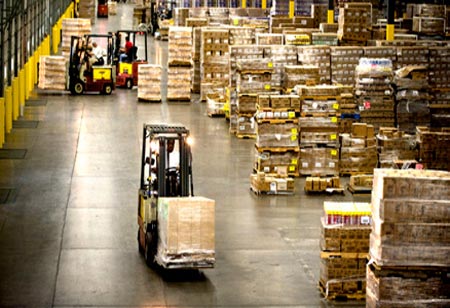
As per the Welspun One Logistics Part (WOLP) report released in May 2020, the Indian logistics and warehousing sector is set to witness a 35% growth by 2021, instead of the earlier estimate of 25%, and will be fastest to recover from the COVID aftermath. Fuelled by numerous factors, including positive government policies, international trade environment, and possibilities around India becoming one of the top manufacturing hubs in the world, the Indian Logistics and Warehousing landscape is set to become a strong supportive infrastructure pillar in the country’s growth narrative, post COVID.
Listed here are some of the key areas that will drive this growth:
1. Robust Cold Chain Network: As per the ‘Indian Cold Chain Industry Outlook 2022’, the Indian cold supply chain sector is set to grow at a CAGR of 17-18%, till 2022, driven mostly by the seafood, meat, and bio-pharmaceutical sectors. Further, growth of organised food retail, processed food market, government initiatives for agriculture supply chain, and rise in nutraceuticals and bio-pharma, are other areas leading to accelerated growth of cold storage and cold supply chain.
2. E-commerce boom: The pandemic has facilitated a boom in e-commerce, which has now become a preferred marketplace for not just fashion and lifestyle but also for groceries, fruits, vegetables, medicines and other essentials. Driven by the comfort of ordering from home, paying online and receiving safe, contact less deliveries, e-commerce continues to be the preferred mode of shopping in the post covid era, which is helping strengthen the logistics and supply chain network, specialised warehousing, and reverse logistics.
3. Investment in Warehousing real estate: As the economic slowdown hampers the residential and commercial real-estate, the industrial and warehousing real estate has gained attention of the investors. With factors like 100% FDI and larger/ safer returns on industrial and warehousing real estate, the monetary investment is further facilitating a robust growth of stat-of-art warehouses with provisions for specialised storage, digital adoption, and smart management features.
4. Boost in Manufacturing: India is on its way to create a self-reliant economy but also vying to be a preferred manufacturing hub for global businesses, seeking alternative destination that offers affordable labour and friendly business policies. This development is set to further boost the logistics and warehousing segment.
The sector has not only been a lifeline during the pandemic but will soar higher at the double digit growth rate, in the coming year
Growth in sectors like automobiles, who are already relaying on specialised warehousing for kitting and final assembly of parts etc., are paving the way for the warehousing and supply chain sector to evolve into a major support infrastructure for manufacturing.
While the pandemic impacted international trade, and transport of cargo, the domestic supply chain for essential goods, powered by an aggressive e-commerce growth, kept the domestic warehousing and logistics sector afloat. Further supportive government policies like conferring infrastructure status to the logistics sector, and initiatives to create Logistics parks, enhance cargo movement through development of roadways, special cargo trains for agriculture and food transport etc., are set to impact the growth of the sector.
Additionally, with the shift in real estate investment from residential and retail to industrial and warehousing real estate, FDI in logistics, digital adoption and application of emerging technology, it is not a surprise to learn that the sector has not only been a lifeline during the pandemic but will soar higher at the double digit growth rate, in the coming year.
We use cookies to ensure you get the best experience on our website. Read more...